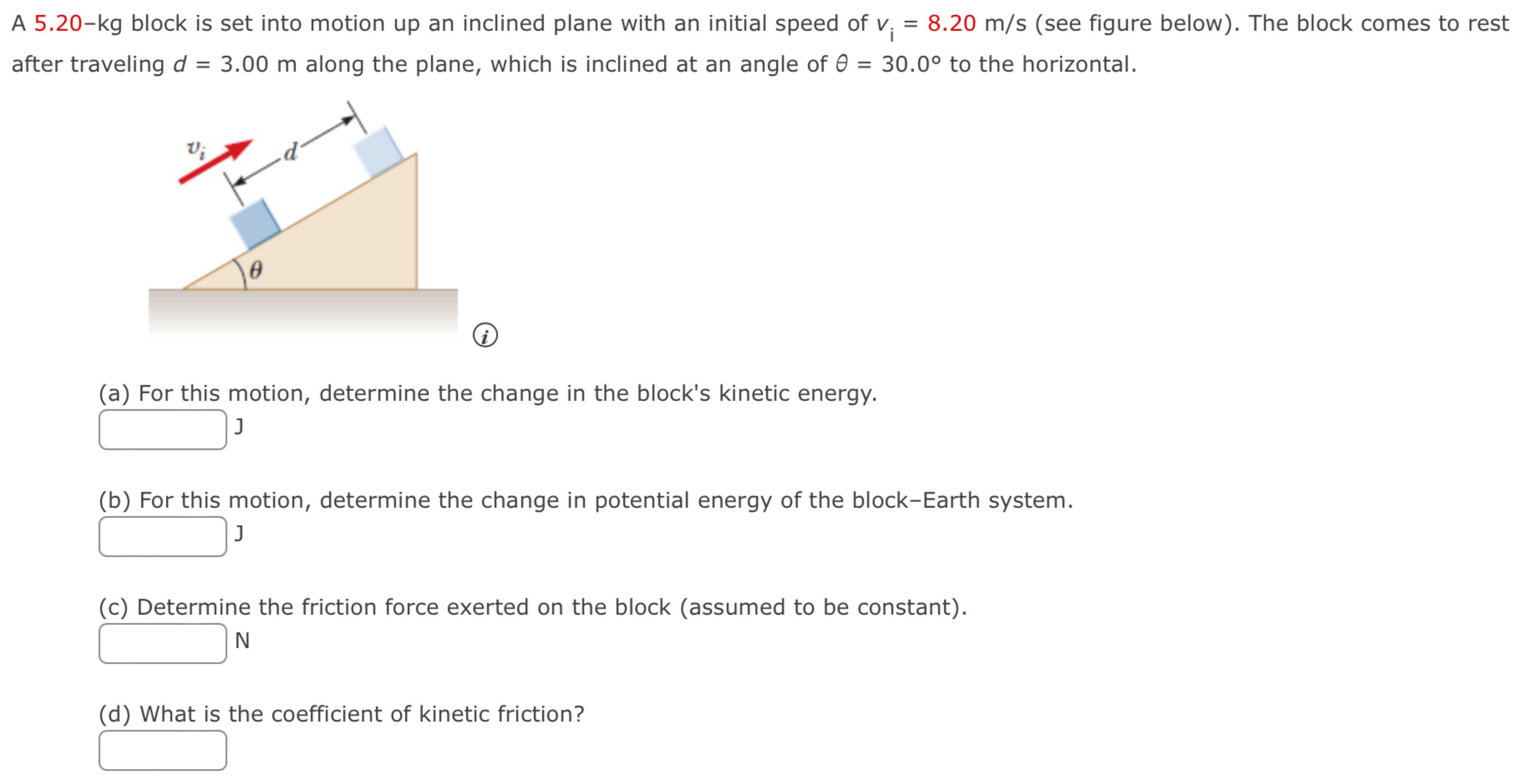A 5.20−kg block is set into motion up an inclined plane with an initial speed of vi = 8.20 m/s (see figure below). The block comes to rest after traveling d = 3.00 m along the plane, which is inclined at an angle of θ = 30.0∘ to the horizontal. (a) For this motion, determine the change in the block's kinetic energy. (b) For this motion, determine the change in potential energy of the block-Earth system. (c) Determine the friction force exerted on the block (assumed to be constant). (d) What is the coefficient of kinetic friction?
